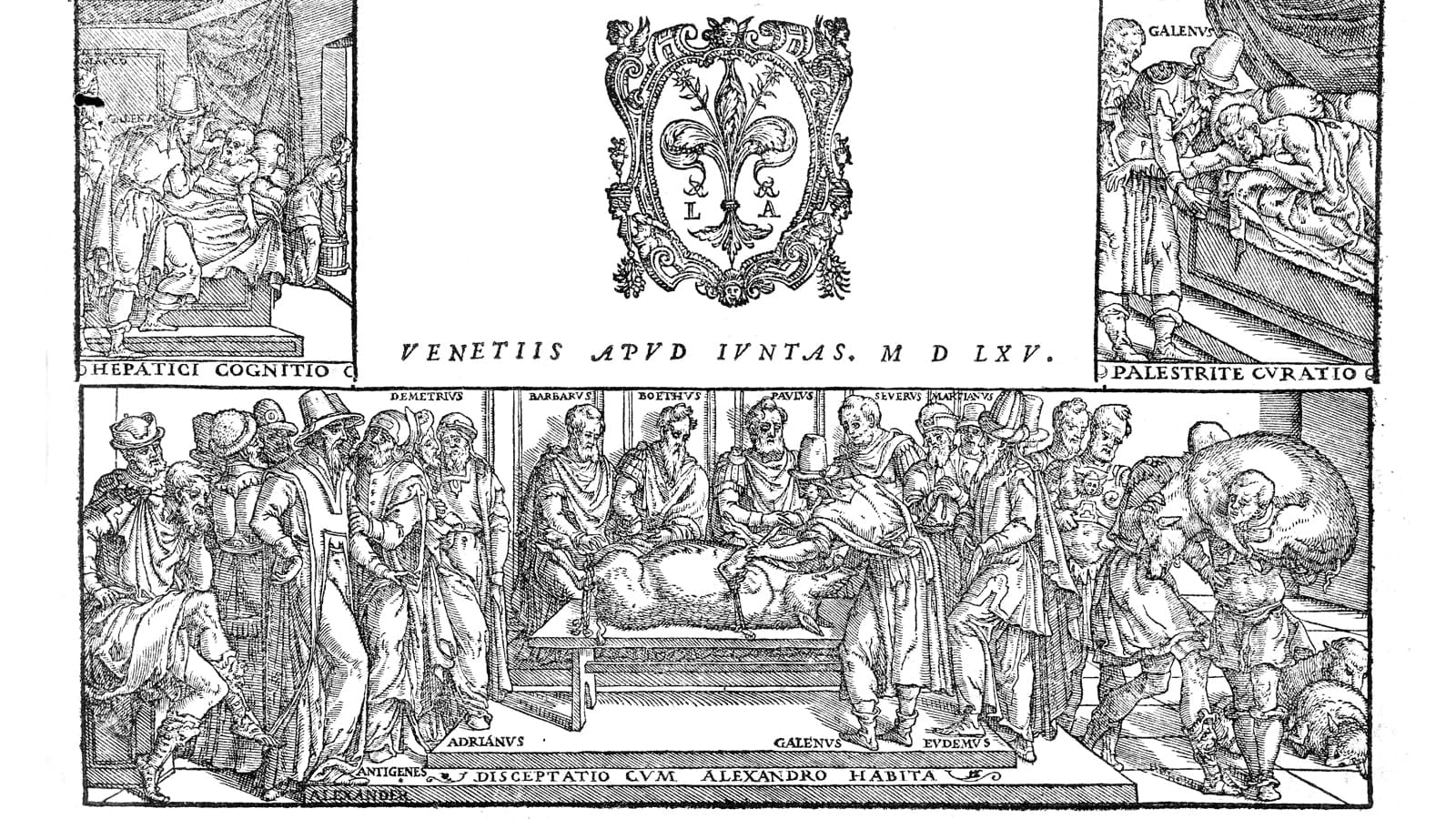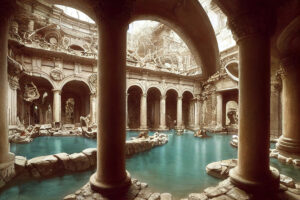he learned neither to read nor swim


In his self-help guide for raising proper boys, John Locke extolled swimming as an ideal exercise. “The Romans thought it so necessary, that they rank’d it with letters; and it was the common phrase to mark one ill-educated, and good for nothing, that he had neither learnt to read nor to swim: Nec literas didicit nec natare.” The Romans had learned this from Plato’s Laws. The idea that a certain type of exercise was best for a certain type of person was a constant in medical exercise—though what types of exercise was best for whom and why changed over place and time. While it is often argued that medical advice on exercise, part of the Hippocratic regimen that remained an integral part of western medicine for over 2,000 years, changed little from classical Greece to the Enlightenment period, let’s look at the lives and writings of two physician-philosophers to gage what remained constant and what changed.
Galen and Locke lived at the turning points of medical eras. Aelius Galenus, aka Galen, (129 – c. 216) was a Greek-Roman doctor whose medical theories relied on newer anatomical concepts from Alexandria, though he ascribed them to those of Hippocrates, Plato, and Aristotle. Galen influenced Western and Middle Eastern medicine until at least the mid-seventeenth century, when English physician John Locke (1632-1704) began to study medicine. Early in his medical career, Locke tried to reconcile the new theories of Paracelsus’ iatrochemistry with the old theories of Galen and Hippocrates. Mechanistic medicine began to shape medical learning in the seventeenth century alongside spirits, humors, and the “non-naturals” (exercise, rest, air, sleep, excretion and retention), which remained part of medical and popular discourse until the late nineteenth century.
Hippocratic writers espoused that the preservation of health and the care of disease were based on managing what later came to be called the “six non-naturals.” This term, which simply means things not of the body that influence health, refers to ancient Greek concepts found in texts such as Epidemics and On Regimen.

Galen wrote extensively on the non-naturals, though what categories it referred to shifted over time. Galen also called these categories things that are “necessary” as opposed to things that are not. Of Galen’s six non-naturals two were exclusive: sleep and emotions. The other four were paired: quality of air and environment (e.g., urban, country, seaside); excretion and retention; food and drink; and exercise and relaxation. These would change over time, for example, to include “the passions,” interpreted by some as sex and others as emotion or mental health. The study and practice of these medical non-naturals have also been referred to as hygiene, dietetics, and regimen.
The details of Locke’s general medical experiences are important to this topic not only because they are little known, but because they show his familiarity with and use of Galen and “regimen,” which included medical exercise. The concept of medical regimen dates to Herodicus of Selymbria (c. fifth century BC), if not earlier. It is concerned with the symmetry of the variables of “diatia,” hygiene, or way of life. A central component of Hippocratic medicine, it considered factors such as airs, waters, soil, climate, season, diet, alcohol consumption, exercise, bathing, rest, relaxation, sleep, and sexual activities. The imbalance of these variables caused disease and the prevention and cure of disease lay in their precise management and balance. The when, where, and how of each variable was balanced with all others in a precise daily regimen which would prescribe where to live (based on season and climate), when to rise, eat, exercise, bathe, etc., until one finally retired. Plato criticized those overzealous in such practices in the Republic.
Of course, changes did occur in medical exercise in the 1400 years between Galen and Locke. Because neither physician wrote in detail about the exercises they prescribed, which were, with some important exceptions, quite similar, it can appear that medical exercise did not change over time. But the exceptions show important differences inspired not by natural philosophy (aka “science”), but by society. Changes in intersecting markers of masculinity and class redefined what was valuable exercise, as well as what was considered healthy.
Galen (129 – c. 216)
 In AD 129, Galen was born to a long line of landed architects in prosperous Pergamum in the Roman Empire (now Turkey). Galen’s medical practice and prolific works advanced and codified a regimen of moderation, of which exercise was a crucial part. Like many elite young men, he studied medicine in Smyrna and Alexandria, though much longer than any other on record—from around age twenty to twenty-eight. When he returned home, the high priest of Pergamum hired Galen as physician to his gladiators. Galen won this challenging position partly due to his lengthy elite education (some physicians had only a few weeks training) and partly due to his father’s high status in Pergamum. The appointment allotted him direct experience with the fiercest of athletes with gory, anatomy-revealing wounds. After his success there, he moved to Rome, where he engaged in regular public demonstrations and debate, eventually becoming a trendy healer to the elites.
In AD 129, Galen was born to a long line of landed architects in prosperous Pergamum in the Roman Empire (now Turkey). Galen’s medical practice and prolific works advanced and codified a regimen of moderation, of which exercise was a crucial part. Like many elite young men, he studied medicine in Smyrna and Alexandria, though much longer than any other on record—from around age twenty to twenty-eight. When he returned home, the high priest of Pergamum hired Galen as physician to his gladiators. Galen won this challenging position partly due to his lengthy elite education (some physicians had only a few weeks training) and partly due to his father’s high status in Pergamum. The appointment allotted him direct experience with the fiercest of athletes with gory, anatomy-revealing wounds. After his success there, he moved to Rome, where he engaged in regular public demonstrations and debate, eventually becoming a trendy healer to the elites.
Roman medicine required oratory (then considered a form of exercise), debate, and competition. While he bemoaned the superficiality of the professional sophist orators and physicians, early in his career Galen regularly engaged in public debates and dramatic demonstrations of healing and anatomy. This performance was part of a public expression of status in a hierarchy that descended from nobility, to freeborn citizens (Galen likely belonged to this group), free men, slaves, and criminals—a hierarchy that deeply impacted the practice of medicine in Hellenistic Rome.

Galen historian Susan Mattern demonstrated that the gymnasium and palaistra (wrestling school and grounds) were institutions so fundamental to the elite urban culture of Rome that it seemed it was a Greek city. Gymnasia were public spaces where Galen not only lectured but saw patients. His case histories featured stories about both free and slave “gymnastic types” in gymnasia who had been injured, and Galen and his emperor, Marcus Aurelius, took exercise in the gymnasium as part of their health regime. As wrestling was the ideal Greek athletic exercise, Galen partook in it, and like most elite male Greeks, he had trained since he was a boy. Though he had dislocated his collarbone in a palaistra match when he was thirty-four, he recommended wrestling in moderation highly. Moderation was always key to balance for Galen, and it was imbedded in concerns about status and masculinity. Training should start in youth: “It is sufficient, when he is learning wrestling, to train moderately there before food and to remain unwashed for the most part. But to overtrain, as some wrestling teachers compel boys to do, is in no way good” (Galen, Hygiene). His case studies also featured patients in the palaistra. Baths, gymnasia, and the palaistrai were the main public spaces of Galen’s Rome, and exercise was intrinsic to elite Roman identity. Galen often refers to Roman baths by the Greek term, gymnasia, the civic center of elite hygiene.
Part I. To be continued.
Top image: Title page of Galeni Opera Omnia (Venice, 1550). Photo: Reynolds-Finley Historical Library, the University of Alabama at Birmingham.